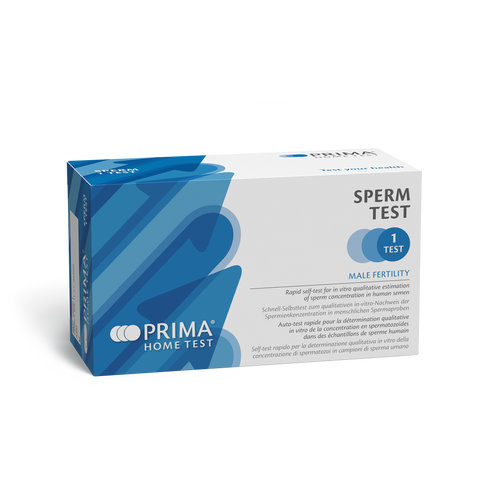PRIMA Lab Sperm Test is an in-vitro device for qualitative determination of sperm concentration in human sperm samples, as an aid to clinical diagnosis of infertility and/or an aid to planning a pregnancy. The test uses a membrane made up of inert glass fibers characterized by a high-water absorption capacity and pores for sperm filtration. The spermatozoa are trapped by the first layer of the membrane and the dye solution colors them: the darker the color in the well, the higher the concentration of spermatozoa in the sample.
It is useful for men who intend to monitor the concentration of sperm and check for possible anomalies. Among the different screening tests, sperm count is considered a valid method for identifying possible infertility: a sperm concentration below 15 million/mL (concentration value considered to be the minimum necessary for conception) may have it necessary to consult a specialist for further investigation and advise on how to increase sperm concentration.
| Specificity |
99.5% |
| Sensitivity |
98.1% |
| Accuracy |
99.1% |
Contents
- 1 test cassette
- 1 vial with dropper containing the staining solution
- 1 vial with dropper containing the washing solution
- 1 pipette for sperm sampling
- 1 collection cup with a substance for the sample liquefaction
- instructions for use
Directions
- Collect the semen directly into the collection cup. Shake it and leave it to stand for 15 minutes;
- Deposit one drop of semen into the test well A, by using the provided pipette;
- Add 3 drops of the staining solution to well A and let it soak for 1-2 minutes;
- Apply 2 drops of the washing solution to well A, and let it soak for 1-2 minutes. Read the results immediately by comparing the color of A to B.
General Safety Information
- Always read the label. Use only as directed.
- Nutritional supplements may only be of assistance if the dietary intake is inadequate.
- Supplements should not be used to replace a healthy balanced diet and adequate physical exercise.
- Keep all medications and supplements out of reach of children.
- If symptoms persist see your healthcare professional.

